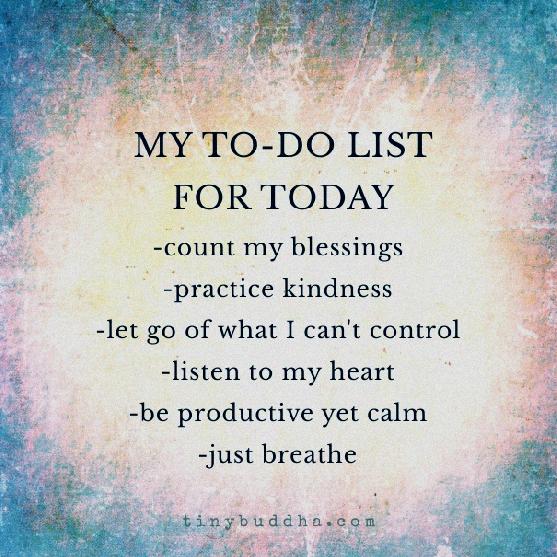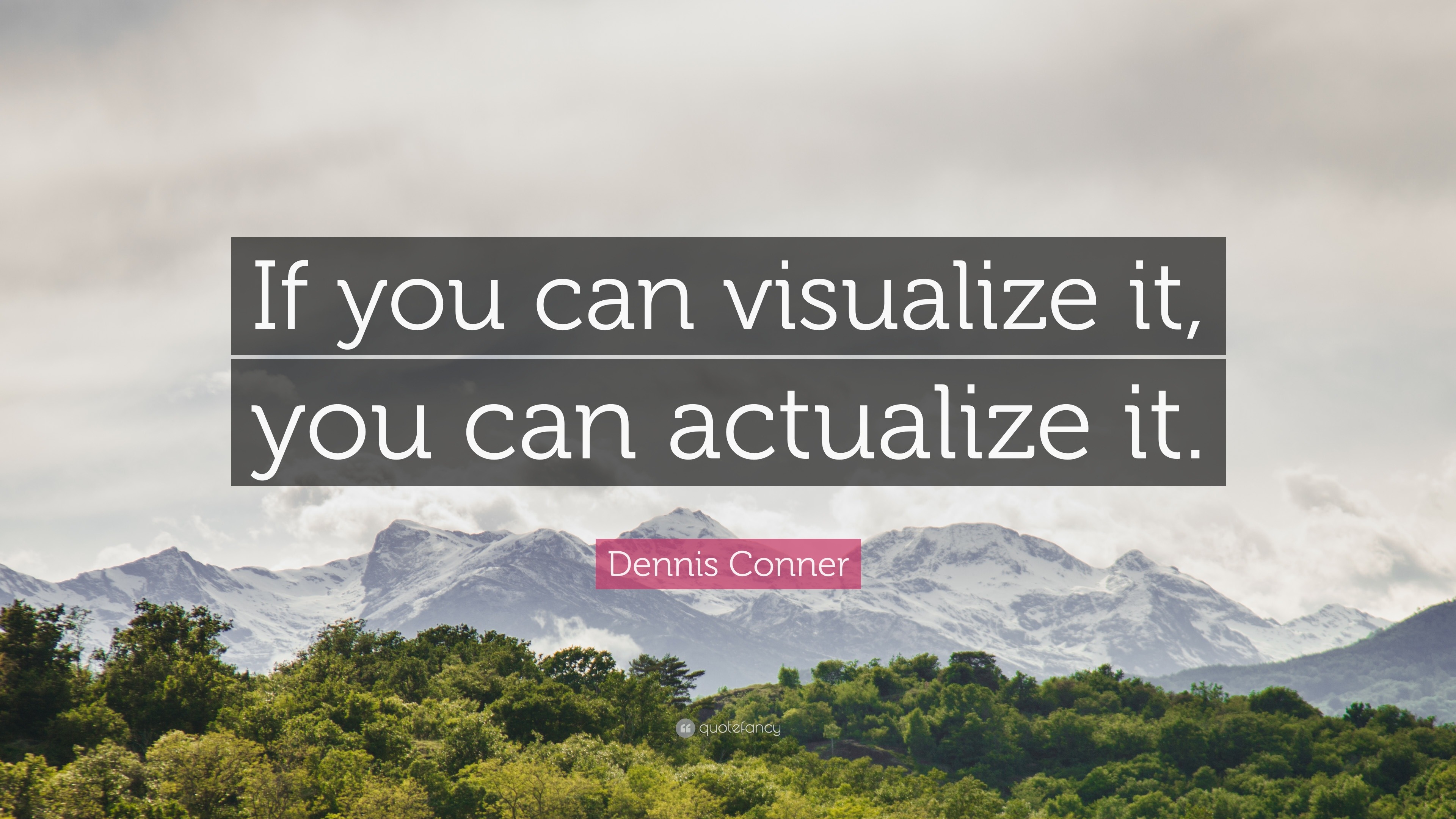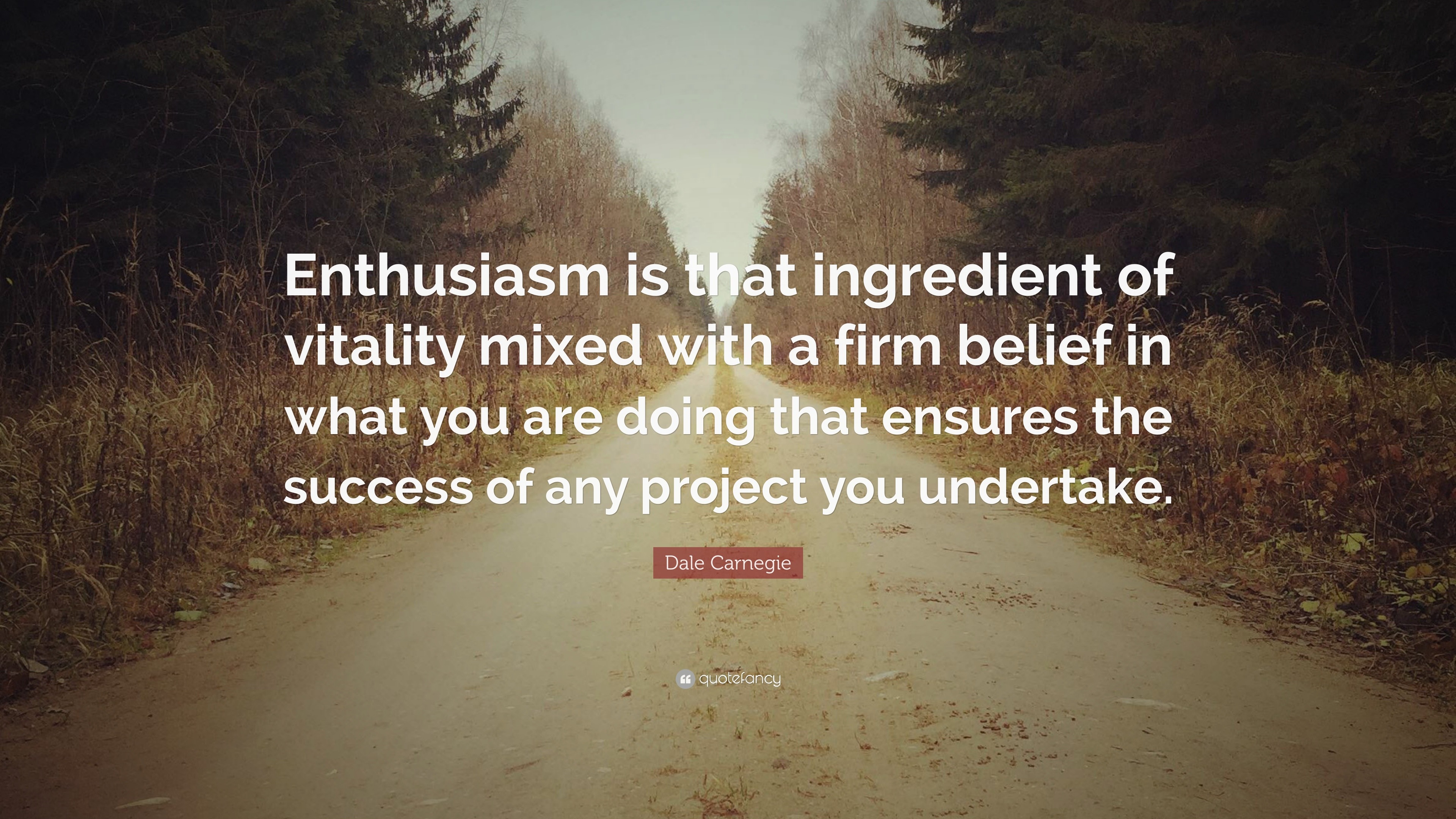We all have goals and dreams we aspire to. The ability to see what it will look like when that goal or dreams is realized can be a powerful tool. As leaders of each of your campuses, you are striving for improvement to reach an "ideal" school that you have envisioned. Have you thought about each and every aspect of what that will look and sound like? I encourage you to take some mindful time and space to visualize each of your goals. See what it looks, sounds, and feels like. Then, begin to incorporate that image into how you plan your actions and support/coaching for your team members. Help those on your team to also "see" the goal. If everyone has an image and an understanding of what they are working towards, they will be able to reference the current reality to the goal.
Here are a few articles that can help you with this practice of visualization to actualization.
Tony Robbins, "Goal Visualization"
Psychology Today, "Visualize to Actualize"
Dan Remon, "Visualization leads to Actualization"
Monday, September 30, 2019
Sunday, September 22, 2019
Enthusiasm, Zest, and Gusto
On Friday morning while doing my daily meditation, the focus of the session was on enthusiasm; being intentional about approaching the day with enthusiasm and joy. It was a good message and a good reminder that our mindset can have such an impact on how we see and approach our work. Our mindset can make a situation better or worse, simply by what we are thinking. There were a few challenges that came my way during the course of the day on Friday. Instead of just getting annoyed or irritated by them, I attempted to use a sense of excitement to tackle the challenges. I was not 100% successful, but I did have a more positive outlook than I would have typically. This will most definitely be some conscious work for me, but it could have such an impactful effect on the day to day.
It wasn't just my morning meditation program that recently emphasized the importance of enthusiasm it was also a common thread through much of the conversations shared during the Student Advisory Council on Wednesday of last week. Student voices are again letting us know that they want to have classes in high school that are relevant and meaningful to the many paths that they may take after high school. Just imagine how amazing our schools could be if each and every one of us approached our daily work with ZEST and GUSTO. Just imagine how amazing our schools could be if we approached our planning with enthusiasm and excitement. It is possible, and in order for it to become a staple of our organization, we each need to believe in our work, believe in each other, and make no excuses. I am honored to be able to work in FSUSD because I have the opportunity to be a part of a larger mission, vision, and goal to make the learning experiences for ALL of our students TK-12 as innovative, meaningful, and productive as they possibly can be. There is no room for complacency!
It wasn't just my morning meditation program that recently emphasized the importance of enthusiasm it was also a common thread through much of the conversations shared during the Student Advisory Council on Wednesday of last week. Student voices are again letting us know that they want to have classes in high school that are relevant and meaningful to the many paths that they may take after high school. Just imagine how amazing our schools could be if each and every one of us approached our daily work with ZEST and GUSTO. Just imagine how amazing our schools could be if we approached our planning with enthusiasm and excitement. It is possible, and in order for it to become a staple of our organization, we each need to believe in our work, believe in each other, and make no excuses. I am honored to be able to work in FSUSD because I have the opportunity to be a part of a larger mission, vision, and goal to make the learning experiences for ALL of our students TK-12 as innovative, meaningful, and productive as they possibly can be. There is no room for complacency!
Tuesday, September 17, 2019
Taking Time for Yourself
It is always good to have the reminder that you need to take time for yourself. Things can get intense and stressful and each of us deals with that stress differently. Something that we can all benefit from is some quiet reflective time. Even during the course of the work day if you find yourself feeling overwhelmed, stressed, or experiencing anxiety, it is okay to take a moment to reground yourself and hit a reset. Here are a few great visuals that can help as you quiet your mind and take a moment to be reflective.






Monday, September 9, 2019
WHEN: The Science Behind Timing by: Daniel Pink
In case you are not aware, I am a huge fan of Daniel Pink. He is an author of several books including the New York Times bestsellers, Drive, To Sell is Human, and a Whole New Mind. Pink’s TED Talk on the science of motivation is one of the 10 most-watched TED Talks of all time, with more than 20 million views. His RSA Animate video about the ideas in his book, Drive, has collected more than 14 million views. I am currently reading his newest book, WHEN The Scientific Secrets of Perfect Timing. All of Pink's books have applications in the work that we do in education. I am intrigued by his newest book and the potential positive implications if we implement some of his ideas.
His newest book takes a look at scientific "secrets" of the best timing to help you be as successful as possible in areas of work, school, and home. Pink talks about the hidden patterns of our everyday lives. Analyzing research and patterns across the globe, there is a pattern in our everyday life where our positive mood rises, dips, and rises again. In the same way, our processing of certain types of tasks can be greatly influenced by the time of day that we are tackling them. In When The Scientific Secrets of Perfect Timing, Pink highlights three conclusions: "First, our cognitive abilities do not remain static over the course of a day. During the sixteen or so hours we're awake, they change often in a regular, foreseeable manner. We are smarter, faster, dimmer, slower, more creative in some parts of the day than others." "Second, these daily fluctuations are more extreme than we realize." "Third, how we do depends on what we're doing." (Pink, 22)
I was fascinated to read about the implications the timing of day has on standardized test results. Pink references research compiled by Harvard's Francesca Gino and two Danish researchers where they looked at four years of test results for two million Danish children and the time of day the students took the test. Students that took the test later in the day did score significantly lower than the students that tested earlier in the day. However, Pink notes that researchers identified a way to help reduce the negative impact of testing later in the day. "Taking a test in the afternoon without a break [before the test] produces scores that are equivalent to spending less time in school each year and having parents with lower incomes and less education. But taking the same test after a twenty-to thirty-minute break leads to scores that are equivalent to students spending three additional weeks in the classroom and having somewhat wealthier and better-educated parents. And the benefits were the greatest for the low-performing students." (Pink, 57)
I am excited to continue to read the rest of this book and identify some strategies that I can implement to improve my and my fellow colleague's work lives. I can't help but think about the timing of most of our staff meetings, late in the day typically around 3:00, when according to self reported scales referenced in the book, people report as the lowest point in the day for enjoying themselves, less warm towards other people, and are the most unhappy. That does not sound the like the most ideal time to get together and discuss challenging topics. However, if the meeting kicks off with a physical activity or "break" it could help to reset the individuals in the room. Something to think about for sure.
His newest book takes a look at scientific "secrets" of the best timing to help you be as successful as possible in areas of work, school, and home. Pink talks about the hidden patterns of our everyday lives. Analyzing research and patterns across the globe, there is a pattern in our everyday life where our positive mood rises, dips, and rises again. In the same way, our processing of certain types of tasks can be greatly influenced by the time of day that we are tackling them. In When The Scientific Secrets of Perfect Timing, Pink highlights three conclusions: "First, our cognitive abilities do not remain static over the course of a day. During the sixteen or so hours we're awake, they change often in a regular, foreseeable manner. We are smarter, faster, dimmer, slower, more creative in some parts of the day than others." "Second, these daily fluctuations are more extreme than we realize." "Third, how we do depends on what we're doing." (Pink, 22)
I was fascinated to read about the implications the timing of day has on standardized test results. Pink references research compiled by Harvard's Francesca Gino and two Danish researchers where they looked at four years of test results for two million Danish children and the time of day the students took the test. Students that took the test later in the day did score significantly lower than the students that tested earlier in the day. However, Pink notes that researchers identified a way to help reduce the negative impact of testing later in the day. "Taking a test in the afternoon without a break [before the test] produces scores that are equivalent to spending less time in school each year and having parents with lower incomes and less education. But taking the same test after a twenty-to thirty-minute break leads to scores that are equivalent to students spending three additional weeks in the classroom and having somewhat wealthier and better-educated parents. And the benefits were the greatest for the low-performing students." (Pink, 57)
I am excited to continue to read the rest of this book and identify some strategies that I can implement to improve my and my fellow colleague's work lives. I can't help but think about the timing of most of our staff meetings, late in the day typically around 3:00, when according to self reported scales referenced in the book, people report as the lowest point in the day for enjoying themselves, less warm towards other people, and are the most unhappy. That does not sound the like the most ideal time to get together and discuss challenging topics. However, if the meeting kicks off with a physical activity or "break" it could help to reset the individuals in the room. Something to think about for sure.
Monday, September 2, 2019
Motivation and Challenge
I have to say that this weekend was a great one. For the first time in a long time I refrained from checking email, sending email, and doing any work related activities until late Monday. I spent time with my family and friends and I was truly present in the time I spent with them. It was a good reminder for me that keeping balance in our work and personal life will actually make us stronger in those areas!
Now, for this week's blog focus; motivation and challenge. I see motivation and challenge as two key areas for success in our lives. Twitter is still my go to for connecting with professionals and learning and sharing. It is also an avenue for challenge and motivation for me. Thanks to teachers like Kristen Soulsby, Shareen Choy, and Ruben Lerma and administrators like Steve Trotter, Rebecca Dinwiddie, Kristen Cherry, and Larissa Sherrod I feel more compelled to get out and run and to push myself harder than I had been. It is quite amazing how a few small words and some pictures can be so compelling to get someone to move, but it has. It is so encouraging and rewarding to see others partaking in challenges and pushing themselves even further than they thought possible. We are supporting and motivating each other and it is makes the challenges so much more doable. This can and is so easily transferable to the classroom as well.
Here is a challenge I think everyone can get involved in. Straight from Dr. Rob Martinez on Twitter: "The school year is young, and I implore you to take on this #Educator Challenge! If you are part of the educational system that serves our 6.2 million students in California, then you have a responsibility to act in ways that connect, engage, and tell those in your world that you notice their efforts, their kindness, and them!"
#Doit! #LeadWithResilience! #togetherwegrow #togetherwelearn#togetherwelead #juntoscrecemos#juntosapredemos #juntoslideramos#liderconresiliencia
Remember how important your words and actions are on all those that you interact with!
Now, for this week's blog focus; motivation and challenge. I see motivation and challenge as two key areas for success in our lives. Twitter is still my go to for connecting with professionals and learning and sharing. It is also an avenue for challenge and motivation for me. Thanks to teachers like Kristen Soulsby, Shareen Choy, and Ruben Lerma and administrators like Steve Trotter, Rebecca Dinwiddie, Kristen Cherry, and Larissa Sherrod I feel more compelled to get out and run and to push myself harder than I had been. It is quite amazing how a few small words and some pictures can be so compelling to get someone to move, but it has. It is so encouraging and rewarding to see others partaking in challenges and pushing themselves even further than they thought possible. We are supporting and motivating each other and it is makes the challenges so much more doable. This can and is so easily transferable to the classroom as well.
Here is a challenge I think everyone can get involved in. Straight from Dr. Rob Martinez on Twitter: "The school year is young, and I implore you to take on this #Educator Challenge! If you are part of the educational system that serves our 6.2 million students in California, then you have a responsibility to act in ways that connect, engage, and tell those in your world that you notice their efforts, their kindness, and them!"
#Doit! #LeadWithResilience! #togetherwegrow #togetherwelearn#togetherwelead #juntoscrecemos#juntosapredemos #juntoslideramos#liderconresiliencia
Remember how important your words and actions are on all those that you interact with!
Subscribe to:
Posts (Atom)





